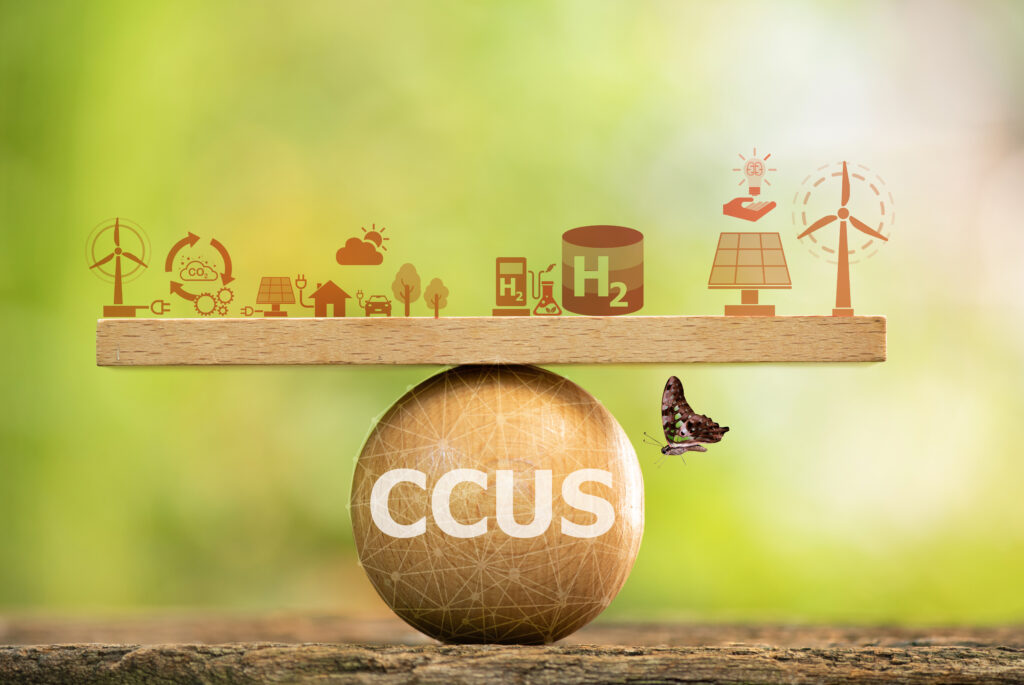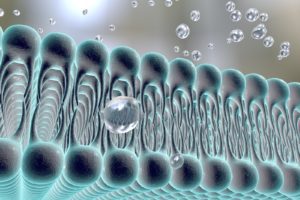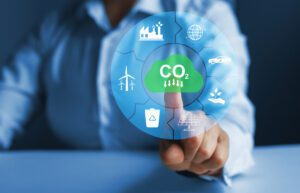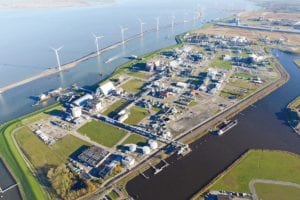This audio was created using Microsoft Azure Speech Services

In the realm of sustainable energy solutions, the collaboration between green hydrogen and Carbon Capture, Utilization, and Storage (CCUS) stands as a potent strategy with transformative potential. This dynamic synergy not only addresses carbon emissions but also propels industries towards a greener future. As we explore how the partnership between green hydrogen and CCUS can redefine sustainability, it’s essential to highlight how Schneider Electric and AVEVA are supporting this evolution.
Green hydrogen’s carbon-free prowess
Green hydrogen, produced through renewable energy-powered electrolysis, boasts a remarkable attribute: it’s entirely carbon-free. Its production involves splitting water molecules using renewable electricity, yielding hydrogen and oxygen without releasing any carbon emissions. This carbon-free characteristic positions green hydrogen as a catalyst for decarbonization across various sectors.
Tackling carbon at its source
Carbon Capture, Utilization, and Storage (CCUS) technology offers a strategic approach to mitigating existing carbon emissions. By capturing CO2 emissions from industrial processes and power plants, utilizing CO2 in valuable applications, and storing it underground, CCUS effectively curtails carbon release into the atmosphere.
Green hydrogen and CCUS
The convergence of green hydrogen and CCUS yields powerful outcomes:
- Carbon-Neutral Hydrogen Production: CCUS complements green hydrogen production by capturing CO2 emissions from conventional hydrogen production methods. This synergy ensures that the carbon footprint associated with hydrogen production is minimized or even eliminated.
- Emission Reduction in Challenging Sectors: Industries with high carbon emissions, like steel and cement, can integrate green hydrogen for energy and incorporate CCUS to capture emissions. This combined approach significantly reduces the carbon impact of these industries.
- Hydrogen and CO2 Storage: Hydrogen and CO2 storage represent a dual approach to combatting climate change. While hydrogen storage leverages its energy potential for grid stability and decarbonization, CO2 storage involves sequestering carbon emissions, a crucial step towards mitigating the impacts of industrial processes and power generation on the environment.
Realizing the Potential of combined use of hydrogen and CO2: Examples in Industries
- Methanol Production: CO2 and hydrogen can be used to produce methanol, a versatile chemical feedstock used in various industries, including plastics, textiles, and automotive.
- Synthetic Natural Gas: CO2 and hydrogen can be converted into synthetic natural gas, offering a clean alternative for heating, electricity generation, and industrial processes.
- Carbon-Neutral Plastics: By utilizing CO2 and hydrogen, industries can create bioplastics and polymers that mitigate the environmental impact of plastic waste.
Solutions for a complete value chain
With Schneider Electric and AVEVA solutions spanning the entire green hydrogen and CCUS value chain, from energy generation to production and storage, industries and stakeholders can confidently design, optimize and operate complete projects with the highest efficiency. AVEVA’s simulations model the intricate interplay of chemical reactions, enabling precise prediction of process efficiency and process dynamics. This knowledge-driven approach empowers industries to fine-tune their operations, optimizing hydrogen production or CO2 capture, utilization, and storage while minimizing energy consumption and operational costs.
- Green Hydrogen Value Chain: Schneider Electric’s solutions encompass renewable energy generation, power distribution, and advanced electrolysis processes that optimize hydrogen production. Combined with AVEVA’s digital solutions, this holistic approach ensures sustainable and efficient green hydrogen generation.
- CCUS Value Chain: AVEVA’s software suite facilitates the digitalization of the CCUS value chain, including direct air capture processes. Advanced simulations and predictive analytics enhance the design, monitoring, and optimization of CO2 capture, utilization, and storage. Together,with energy efficiency and process control solutions from Schneider Electric, the entire CCUS value is efficiently designed, built, and operated.
Unlocking complete value for developers, EPCs, and operators
One of the distinctive advantages of Schneider Electric’s solutions lies in their integrated power and process approach. By optimizing the synergy between energy generation, distribution, and industrial processes, Schneider Electric helps industries significantly reduce Total Expenditure (TOTEX). This integrated approach enhances efficiency, minimizes operational costs, and streamlines the implementation of green hydrogen and CCUS projects. The result is a more streamlined and cost-effective transition to sustainable energy solutions.
Schneider Electric’s integrated power and process solutions and AVEVA’s digital expertise provide comprehensive value to the entire value chain. Developers benefit from streamlined project execution, with end-to-end solutions that cover energy generation, distribution, and utilization. Engineering, Procurement, and Construction (EPC) companies gain optimized project design and implementation, ensuring efficient integration of green hydrogen and CCUS technologies. For operators, these solutions translate into enhanced operational efficiency, real-time monitoring, and predictive maintenance, minimizing downtime and maximizing performance.
Forging a sustainable path, supporting industry
The convergence of green hydrogen and CCUS ushers us into an era defined by sustainable energy solutions. Their combined potential offers a compelling pathway to address carbon emissions in industries that have historically posed challenges for decarbonization. As we harness the power of this transformative synergy, Schneider Electric and AVEVA support your journey that not only mitigates our carbon footprint but also shapes a future where clean energy and responsible resource management coexist harmoniously, yielding innovative products and processes that drive sustainable growth.
Learn more about the future of hydrogen energy through our Green Hydrogen page.




Add a comment